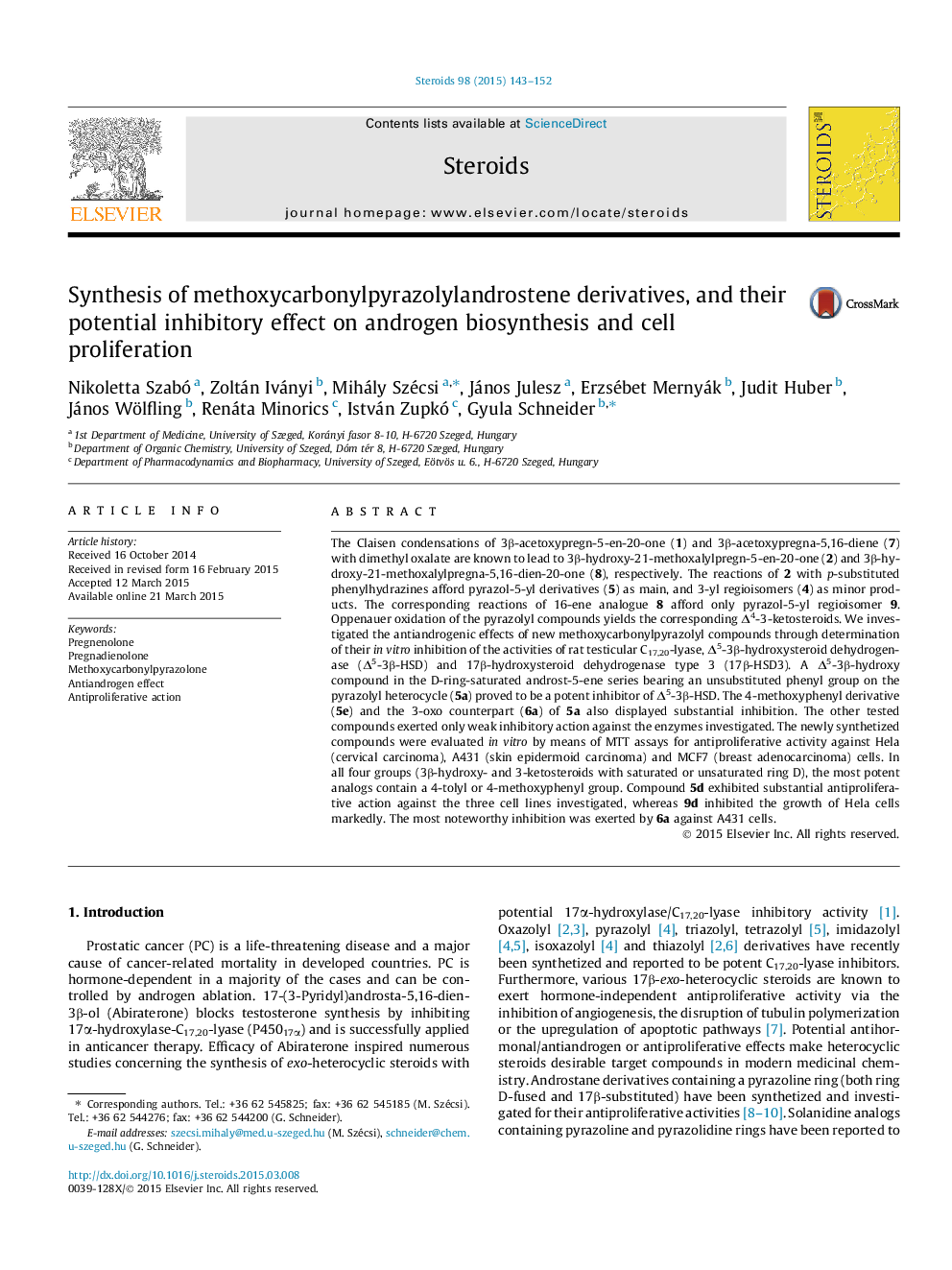| Article ID | Journal | Published Year | Pages | File Type |
|---|---|---|---|---|
| 2029177 | Steroids | 2015 | 10 Pages |
•Synthesis of 3-methoxycarbonyl-1-phenyl-5-pyrazolylandrostene derivatives.•Inhibition of the enzyme Δ5-3β-HSD by 17β-pyrazolylandrost-5-ene compounds.•Antiproliferative effects of 17β-pyrazolylandrost-5-ene compounds.
The Claisen condensations of 3β-acetoxypregn-5-en-20-one (1) and 3β-acetoxypregna-5,16-diene (7) with dimethyl oxalate are known to lead to 3β-hydroxy-21-methoxalylpregn-5-en-20-one (2) and 3β-hydroxy-21-methoxalylpregna-5,16-dien-20-one (8), respectively. The reactions of 2 with p-substituted phenylhydrazines afford pyrazol-5-yl derivatives (5) as main, and 3-yl regioisomers (4) as minor products. The corresponding reactions of 16-ene analogue 8 afford only pyrazol-5-yl regioisomer 9. Oppenauer oxidation of the pyrazolyl compounds yields the corresponding Δ4-3-ketosteroids. We investigated the antiandrogenic effects of new methoxycarbonylpyrazolyl compounds through determination of their in vitro inhibition of the activities of rat testicular C17,20-lyase, Δ5-3β-hydroxysteroid dehydrogenase (Δ5-3β-HSD) and 17β-hydroxysteroid dehydrogenase type 3 (17β-HSD3). A Δ5-3β-hydroxy compound in the D-ring-saturated androst-5-ene series bearing an unsubstituted phenyl group on the pyrazolyl heterocycle (5a) proved to be a potent inhibitor of Δ5-3β-HSD. The 4-methoxyphenyl derivative (5e) and the 3-oxo counterpart (6a) of 5a also displayed substantial inhibition. The other tested compounds exerted only weak inhibitory action against the enzymes investigated. The newly synthetized compounds were evaluated in vitro by means of MTT assays for antiproliferative activity against Hela (cervical carcinoma), A431 (skin epidermoid carcinoma) and MCF7 (breast adenocarcinoma) cells. In all four groups (3β-hydroxy- and 3-ketosteroids with saturated or unsaturated ring D), the most potent analogs contain a 4-tolyl or 4-methoxyphenyl group. Compound 5d exhibited substantial antiproliferative action against the three cell lines investigated, whereas 9d inhibited the growth of Hela cells markedly. The most noteworthy inhibition was exerted by 6a against A431 cells.
Graphical abstractFigure optionsDownload full-size imageDownload as PowerPoint slide
